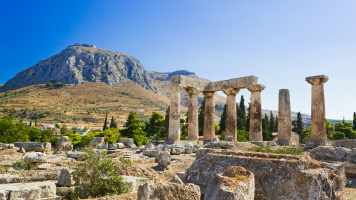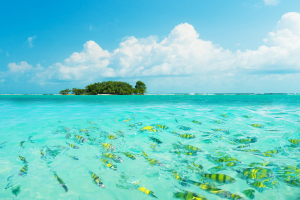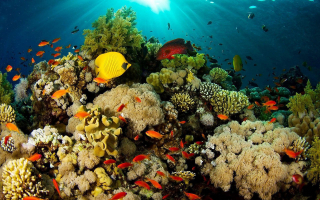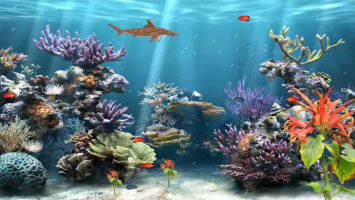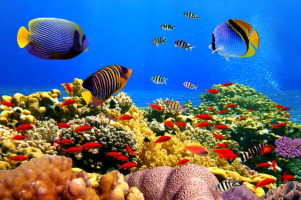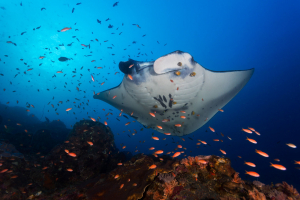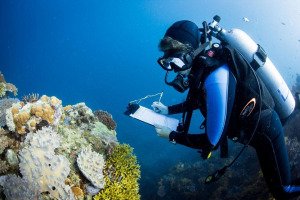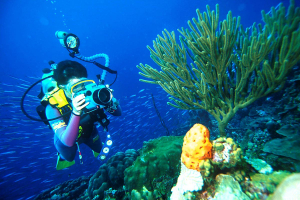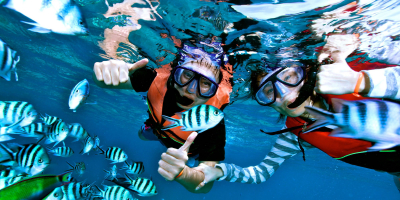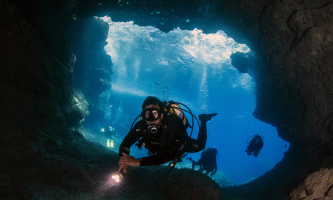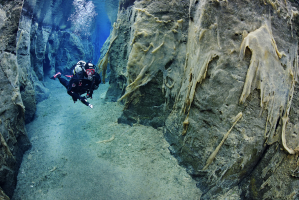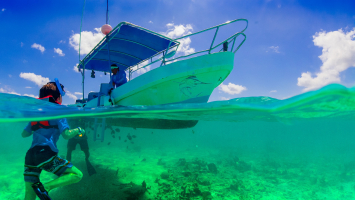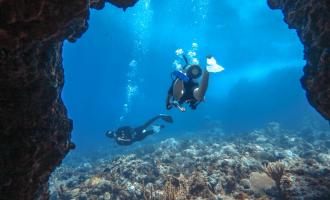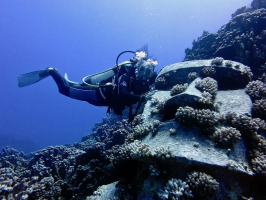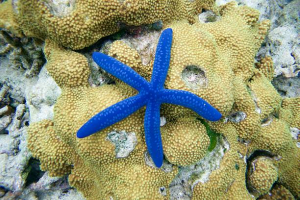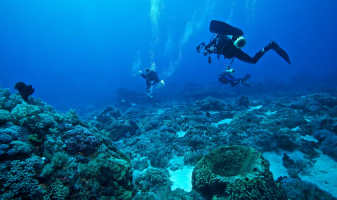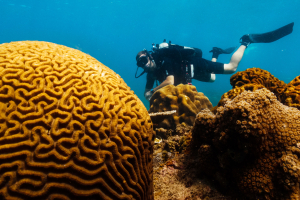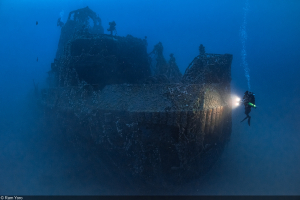Top 10 Most Popular Dive Sites In Greece
Greece, a best place where you can fulfill your diving. The region is one of the planet’s true gems and home to diving so good you’ll book your next trip the ... read more...moment you get back home. But with 138 dive sites listed in Greece, of which 61 are wall, 57 are reef and 31 are beach, you’re spoiled for choice when it comes to picking your Greece diving destination. To help you choose between great and greatest, here’s the round-up of the best dive sites in Greece.
-
Pefkos Beach is one of the best dive sites in Greece and definitely not skip for a new one who begins dive. Pefkos is a small village and holiday resort just after Lindos and about 56km from Rhodes Town. Equipped with a shower area, WC, and a briefing area under the shade of the beautiful pine trees, where Pefkos got its name from. Start diving from Fokia Bay, which is just outside the main village of Pefkos.
A beautiful, shallow dive site, with many rock overhangs iding a plethora of Mediterranean sea life. With depths from 5 to 14 meters, you can swim through aquatic life such as pipefish, damselfish, stingrays, rockfish, and chance of turtles. Visibility 20meters and temperature from 19 to 30 degrees, you can try many programs such as qualified divers, discover scuba, PADI courses, snorkeling, etc. All are waiting for you! Let's come and try.
Location: Pefkos, Greece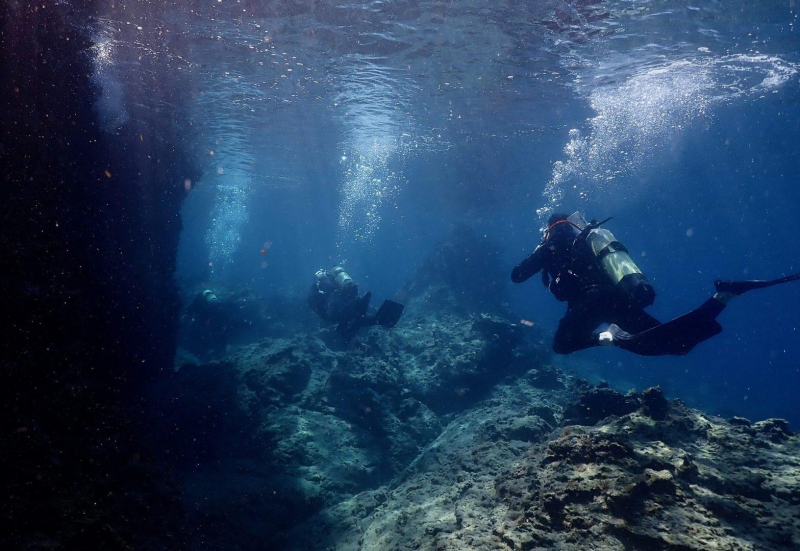
padi.com 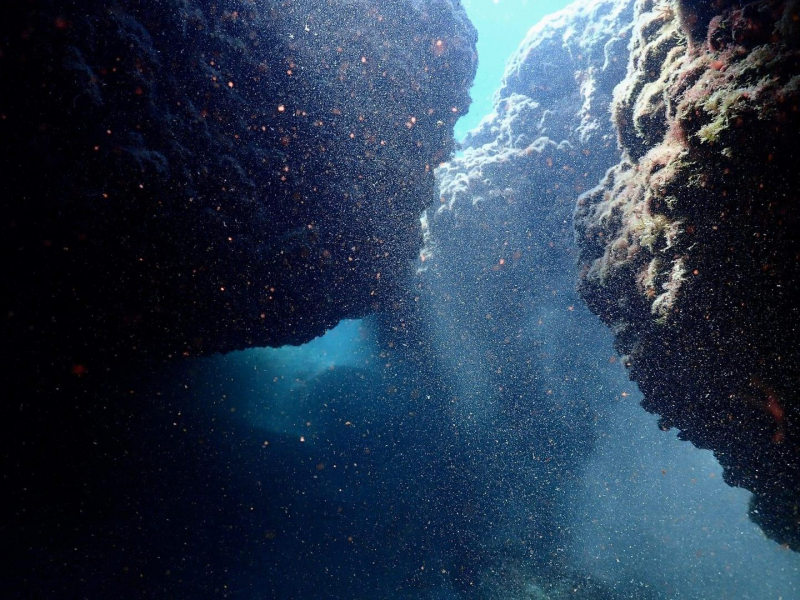
padi.com -
Valitsa Bay is one of favorite places for a break in Kassandra and is among the best dive sites in Greece. Coming to Valitsa Bay, any visitor must be amazed because each sea here has its own unique scenery. This spot, located on the east side of the Kassandra peninsula, is near The Cape of Paliouri. The left side of Valitsa Bay is also known as Porto Valitsa. It is located after the Xenia beach. Small, wild bay, mostly with stones, and next to it is a restaurant and a coffee bar with an amazing view.
You start your dive following a sandy path among a Posidonia forest. Then, the bottom becomes rocky and progressively deeper with steps and, big rocks and overhangs with vegetation are scattered all over the place. There, you may see moray eels, octopuses, groupers, and sargus fish. Snorkeling activities here are extremely diverse, you can freely choose according to your needs and preferences. The best time to experience scuba diving is from May to July.
Location: Kassandra, Greece
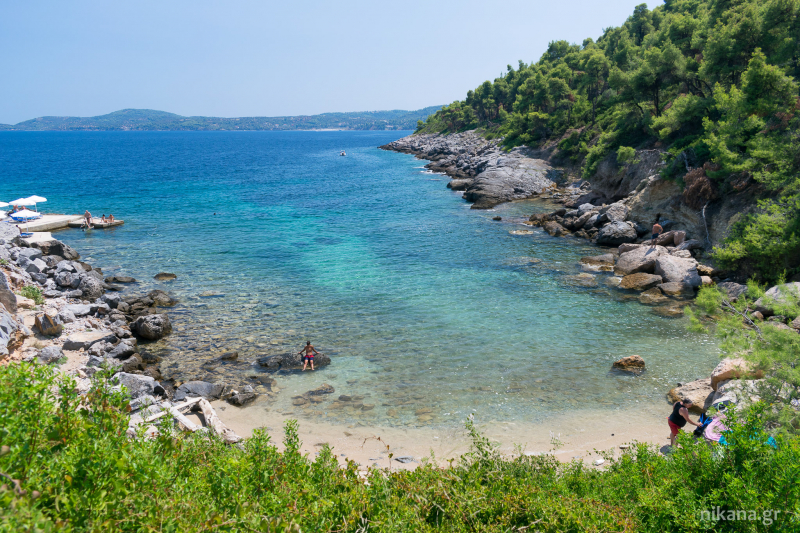
nikana.gr 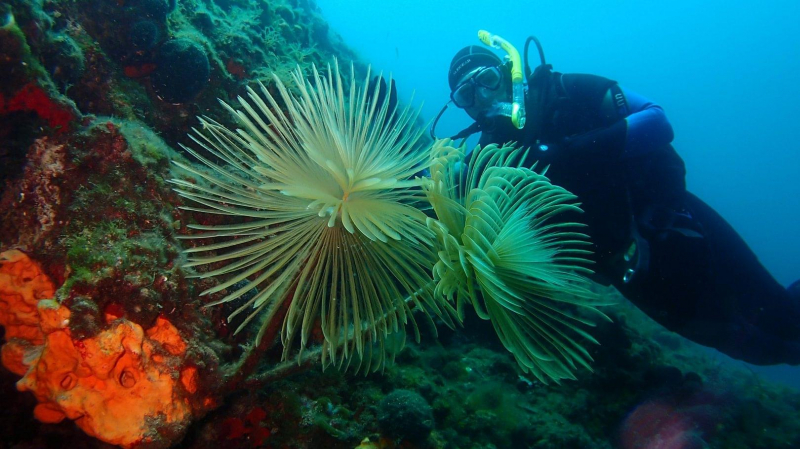
PADI -
Pavlopetri - dive down to a sunken city - is among the best dive sites in Greece. Even if you’re not a qualified diver, it’s still possible to go snorkeling and view fascinating underwater sights and marine life in Greece’s azure seas. A superb example is the remains of the 5,000-year-old sunken city of Pavlopetri, which lie in the shallow waters of Vatika Bay, best accessed from the beaches of Pounta in the southern Peloponnese.
The closest main city to the site is Neapoli, but a blissful base for exploring this region is the island of Elafonisos, which offers spectacular white sand beaches and the chance to spot loggerhead turtles. Recreational diving is banned at Pavlopetri, so the only way to see the UNESCO-protected site is by snorkeling. Although you’ll have to use your imagination to work out the city’s layout from the underwater remnants, Pavlopetri, which thrived for around 2,000 years before it was claimed by the sea, represents one of Europe’s first ‘planned’ cities, with distinct residential and commercial neighborhoods.
Location: Pavlopetri, Greece
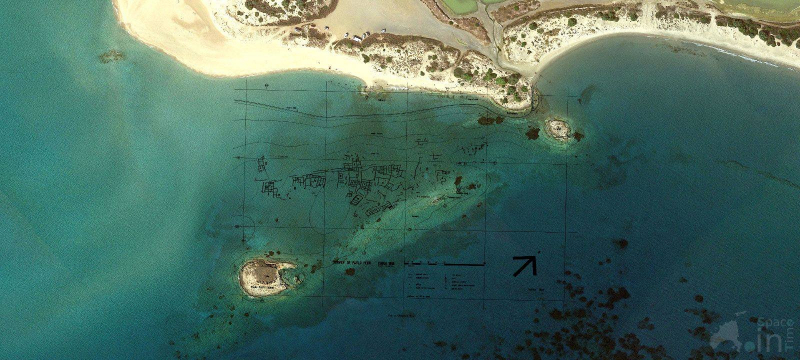
Facebook: Patriot Dive Center 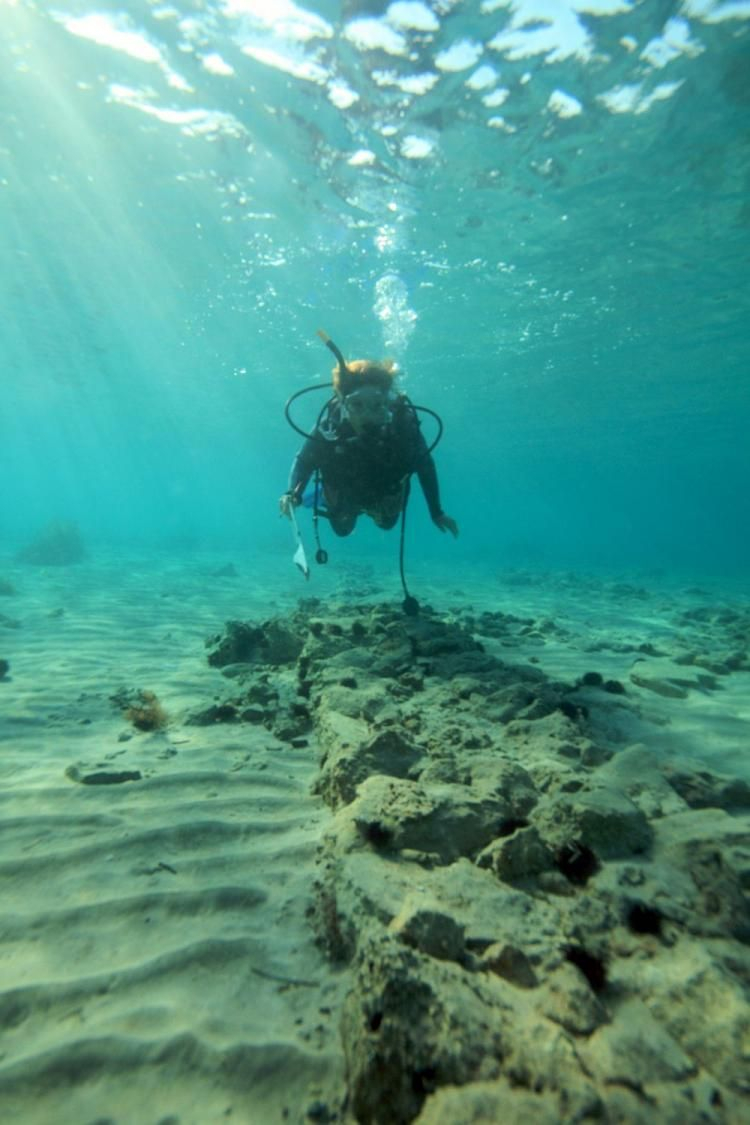
pinterest.com -
One of the best dive sites in Greece can't forget to mention Zakynthos. The turquoise waters around crab claw-shaped Zakynthos make it the go-to diving destination of the Ionian Islands. Base yourself in Zakynthos Town, the island’s capital, which has a showstopper of a waterfront and is overlooked by the remains of a Venetian fortress. Gerakas Beach, at the tip of the Vasilikos peninsula, is where endangered loggerhead turtles (also known as Caretta) come to lay their eggs during the breeding season (May to October) and is part of a National Marine Park covering the Bay of Laganas and stretching out to the Strofades, two small islands 50 nautical miles south of Zakynthos.
As well as turtles, visitors also have the chance to spot rare Mediterranean monk seals here. The coast surrounding the quiet village of Keri is home to at least a dozen dive sites, ranging from vertiginous wall dives plastered in marine life to deep caves where giant shrimps, octopus, and slipper lobsters lurk in dark crevices. Marathonisi, an islet just off the southern coast of Zakynthos, offers crystal-clear waters that make it another great spot for both diving and snorkeling.
Location: Ionian Island, Greece
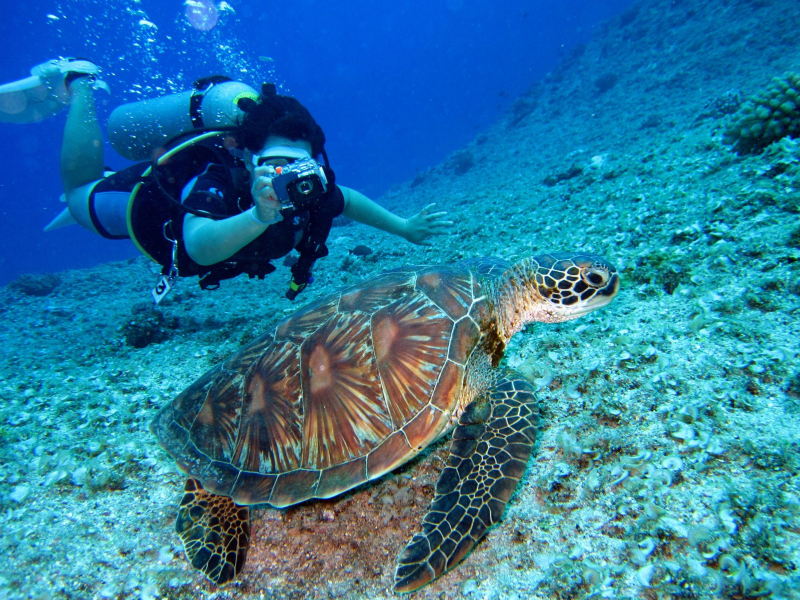
zakynthosactivities.com 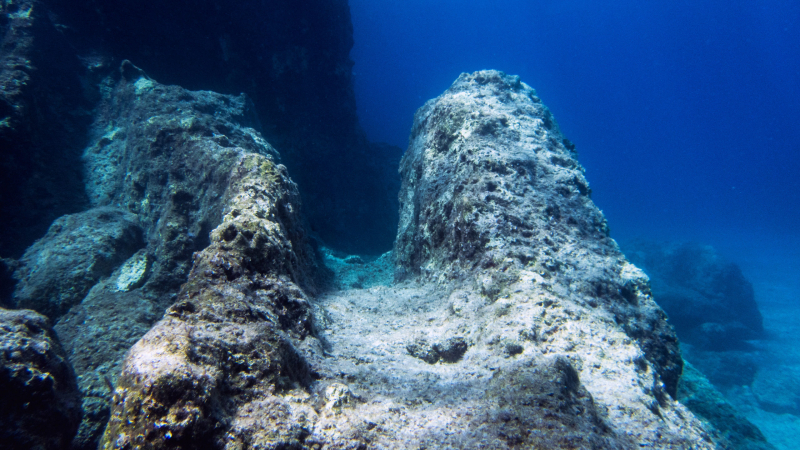
divetip.com -
Located just six miles off the Macedonian mainland town of Kavala, Thasos’s nickname is the Emerald Isle because it’s so green. In ancient times, this Northern Aegean island prospered thanks to a natural abundance of white marble and gold; there’s a beach, simply known as Marble Beach, about four miles south of the capital Thasos (also called Limenas) where the sand is made up of innumerable tiny brilliant white crumbs of marble. Further around the southeast coast is the archaeological site of Aliki where marble was quarried for centuries. Part of this 2,500-year-old quarry is submerged under the sea making for a unique dive site.
The San Antonio rocks, close to the resort of Potos on the island’s southwest coast, make for an ideal site for novice divers. Among the marine life are moray, tuna, and groupers darting amid the orange coral and sponges. More experienced divers will relish the deep-water challenge of the Giola Archangelos wall where submarines hid during the Second World War. It’s now a habitat for scorpionfish, anemones, and sea turtles. Therefore, Thasos deserves one of the best dive sites in Greece.
Location: Northern Aegean Islands, Greece
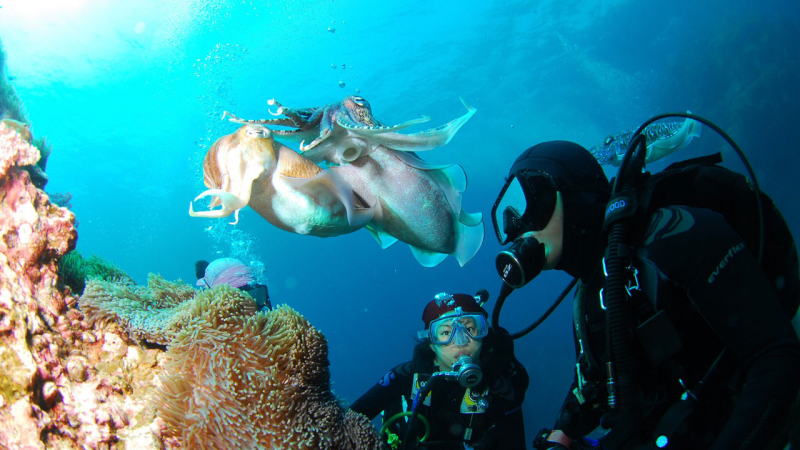
scuba-vas.gr 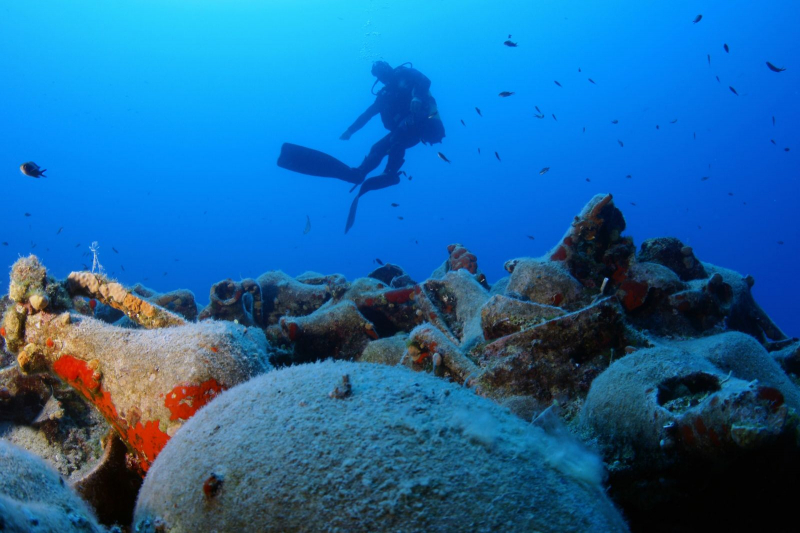
nationalgeographic.co.uk -
Amorgos is a place to admire sea life and soft coral and is one of the best dive sites in Greece. Featured in Luc Bresson’s cult 1988 film The Big Blue, the beautiful island of Amorgos in the Cyclades is the place to experience the thrill of free-diving. There are dive operations in both of the island’s ports — Katapola and Aegiali — to assist you in exploring these reef and shipwrecked-filled seas, blessed with incredible water visibility and sea life including barracuda, damselfish and tuna.
One of the best dive sites can be accessed off Agios Pavlos Beach. Here, the Nikouria’s Cavern is decorated with sponges and soft coral in all the shades of the paint box and provides a habitat for spiral worms and other fascinating micro marine life. It’s an hour’s boat ride from Amorgos to the island of Kinaros to dive the wreck of the cargo ship Manina 3, which sunk in 1981. Still partly visible above the water, the ship’s top deck is at a maximum depth of 50ft and the wreck has become an artificial reef.
Location: Cyclades Islands
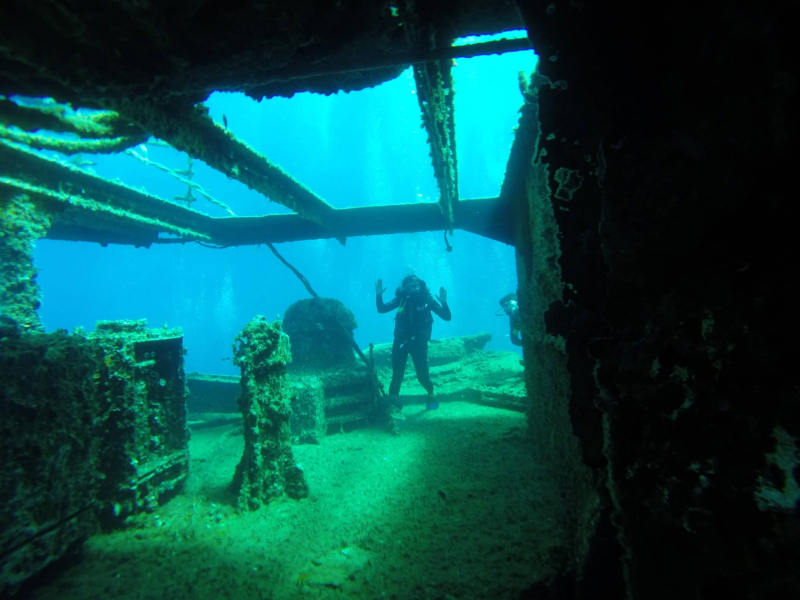
amorgos-diving.com 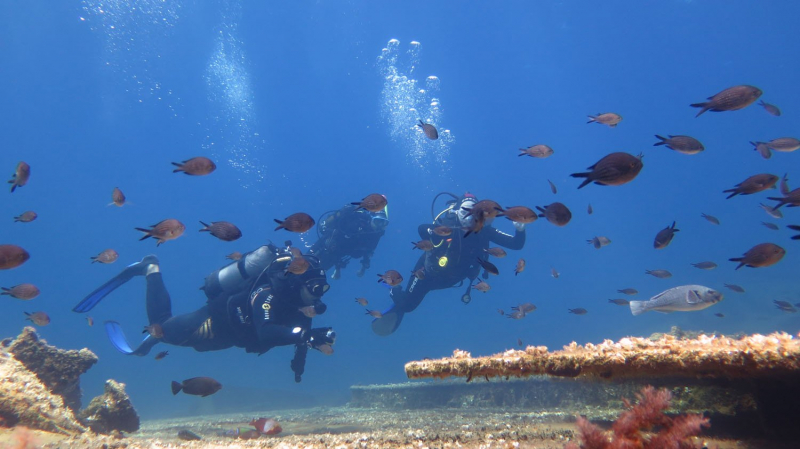
amorgos.gr -
Alonissos - swim around a fifth-century shipwreck - is also one of the best dive sites in Greece. Europe’s largest marine park covers some 870sq miles around the northern Sporades island of Alonnisos and its neighbouring 29 islands and islets. Declared a national marine park in 1992, it's home to a colony of around 60 endangered Mediterranean monk seals and three species of dolphin. Of the 400-500 Mediterranean monk seals that remain, approximately two thirds of them inhabit Greek waters. Cuvier’s beaked whales and sperm whales have also been sighted here.
The main town, Patitiri, is located near the island’s southern tip and is the place for organised diving trips. If you hold an advanced open water diving certification, be sure to book one of the limited slots to explore the fifth-century BC wreck off the islet of Peristera. Dubbed the ‘Parthenon of shipwrecks’, this underwater museum has labelled finds and features a mound of 4,000 mostly intact amphorae. Other popular dive sites include the Blue Cave, where you’ll be able to spot coral, sponges, nudibranchs, scorpion fish and groupers.
Location: Aegean Islands, Greece
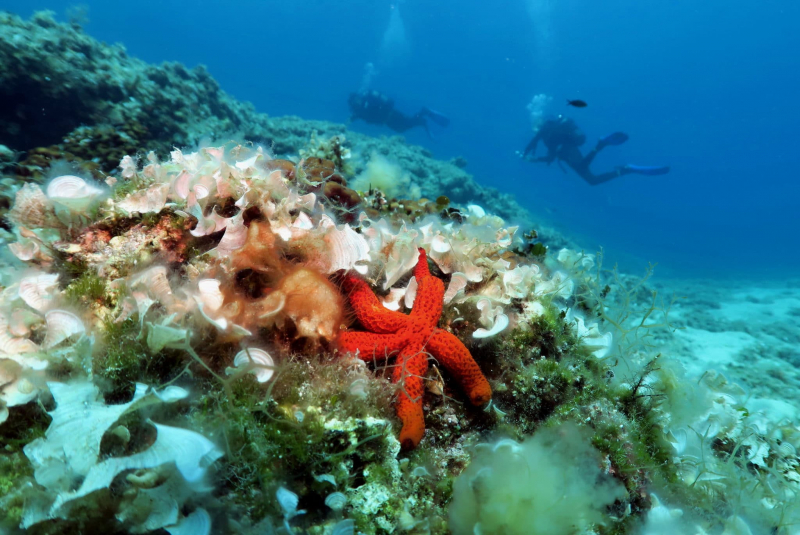
worldadventuredivers.com 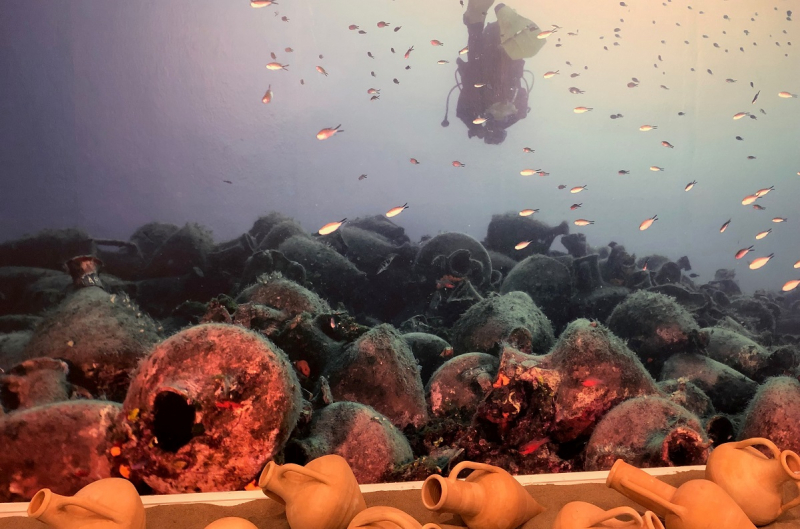
scubahellas.com -
One of the best dive sites in Greece must mention Skinaria. The south coast of Crete offers some of the best diving in the Mediterranean. Head to Skinaria, just east of Plakias, for a tranquil bay with plenty to see beneath the water’s surface. Swim through beautiful seagrass-covered gorges and skirts along a 30m (100ft) drop-off, home to a variety of moray eels and octopus. Advanced divers can venture into the underwater cavern. The route to the cave is a bit long and not very interesting. The area just outside the cave is beautiful with an almost vertical wall that descends from 7 meters to 20 meters.
The cave itself is about eight meters wide and seventeen meters deep. During the day you will find an abundance of shrimp in the cave. The system also has two wide and two very narrow chimneys. The bottom consists of sand and seagrass. Visibility is excellent here, often stretching to 40m (131ft). It is a nice seascape and some sea life to observe.
Location: Crete Island, Plakias, Greece.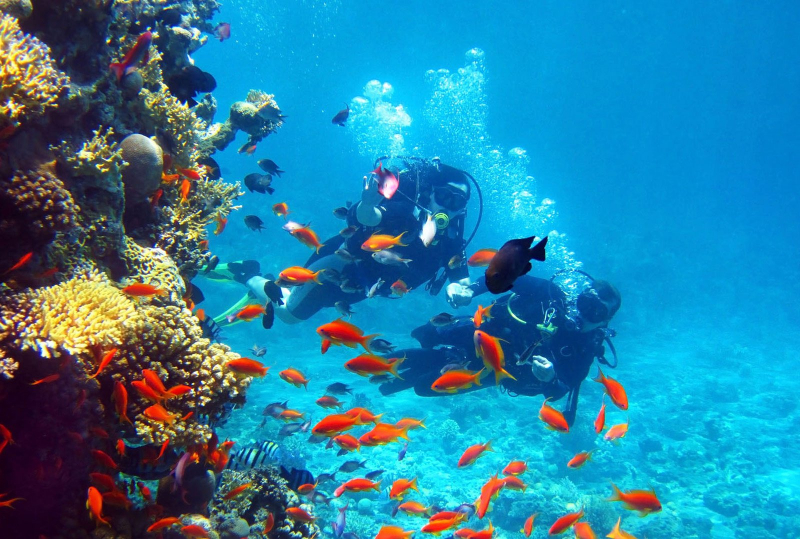
traveltogreece.net 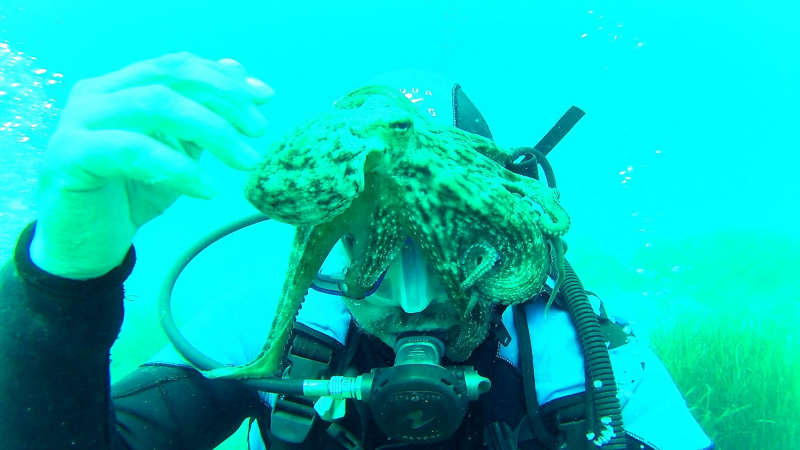
traveltogreece.net -
Corfu is known as the cavern diving center of the world that combines sunshine beauties and luxurious places together. On the northwest coast, Paleokastritsa is the most beautiful and famous area in Corfu for scuba diving. The area is full of spectacular caverns and caves, interesting shipwrecks, walls, and reefs, where certified divers can find barracudas, groupers, jacks, moray eels, common dentex, several types of sea bream, crayfish, octopus, nudibranch, cuttlefish, squid and a lot of other kinds of fish and invertebrates.
Beginners with their PADI Open Water certificate should head to the Hole of Ha, an easy cavern dive that ventures inside the cliff face – lookout for fossilized conch shells and dripping stalactites. More experienced divers should book an excursion to the Chimney, a narrow chute starting at 28m (92ft), or Colovri Cave, home to dozens of colorful shrimp.Location: Corfu, Greece.
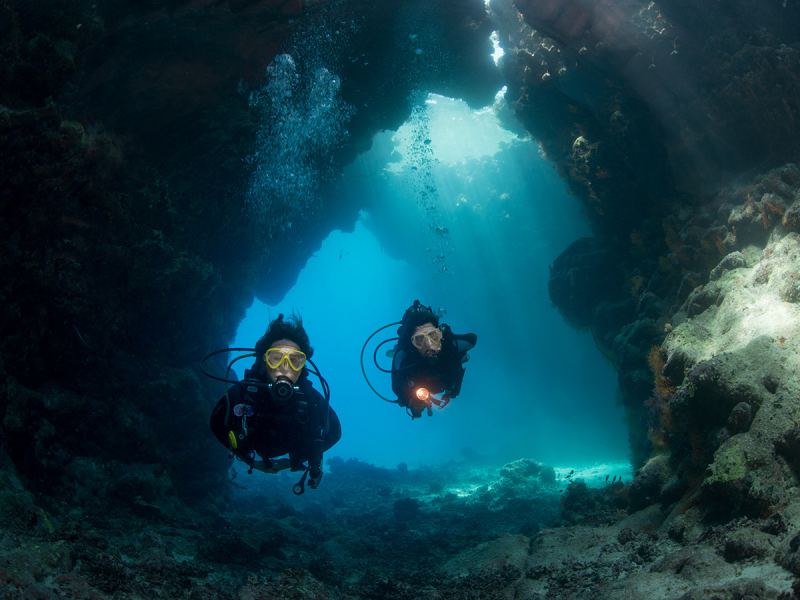
OutdoorTrip 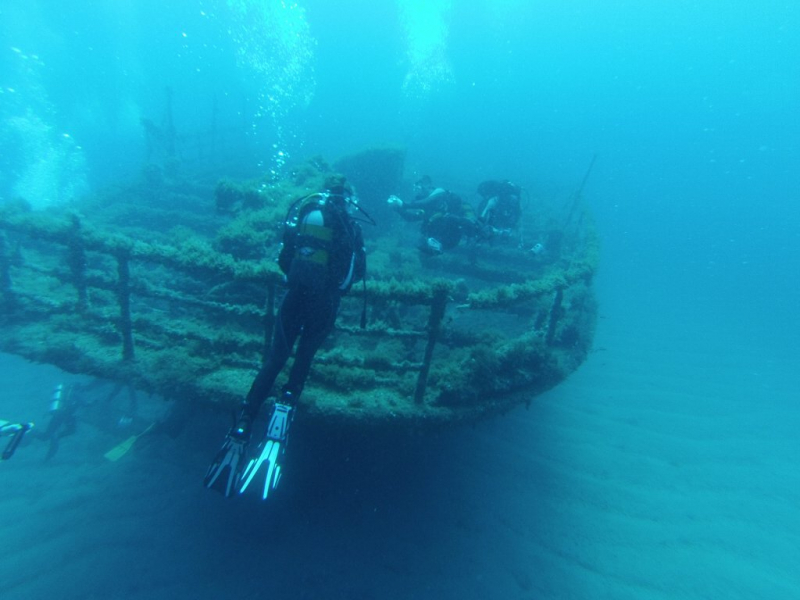
OutdoorTrip -
The volcanic island of Santorini offers exciting scuba diving possibilities. One of the best spots is Nea Kameni, formed by an eruption, it last erupted in 1956. Dive on a very new volcanic island in the center of an old exploded volcano, whose caldera is open to the sea. There is not a lot of life, but the water is clear, and there are some quite interesting lava formations here. The bottom of the crater drops away to hundreds of meters.
Besides, the Santa Maria wreck is a 34m-long (112ft) steel passenger ship that sank in the Taxiarachis Bay in 1975. It is 18m (59ft) under the surface and is actually visible below the surface in the Google Maps photo, so it isn't hard to find. Therefore, it awaits all divers. The nearby waters also feature underwater lava formations and sea caves that are worth exploring.Location: Santorini, Greece.
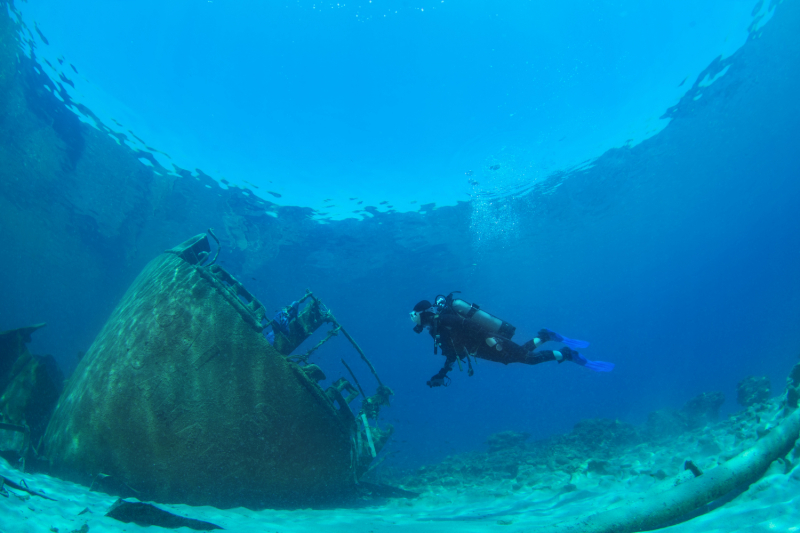
traveltogreece.net 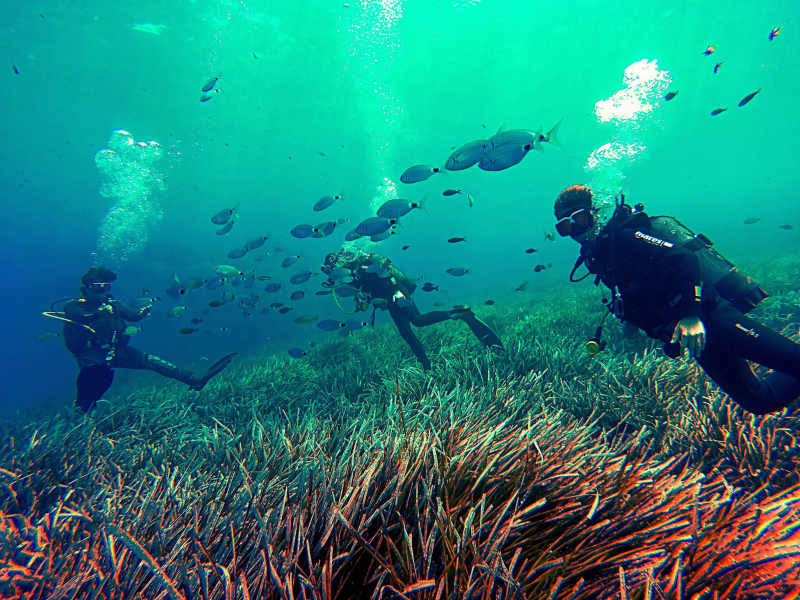
traveltogreece.net












